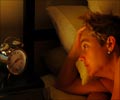ATS 2011, DENVER - Sleep problems among urban minority children, including resistance to going to bed, shortened sleep duration, and daytime sleepiness are much more common than previously

"The results of this study will be of significance to healthcare providers, researchers, parents and educational professionals, and will have significant public health implications for a highly vulnerable population of early school-aged children," she said.
Researchers randomly enrolled 160 parents of healthy 5- and 6-year-old children. Data were obtained using parental sleep log records and through face-to-face interviews using the Children''s Sleep Habits Questionnaire (CSHQ), a validated tool commonly used to screen for childhood sleep problems. CHSQ data were used to identify and characterize the nature of the sleep disturbances. In addition, researchers were able to obtain data from 30 children who underwent sleep monitoring at home for five to seven days using actigraphy, an objective method of continuous, direct-motion monitoring used to measure sleep and awake time. The monitors were worn 24-hours a day during the monitoring period.
"To our knowledge, neither the CHSQ nor actigraphy has been used extensively in this population of early school-aged children to examine sleep," Dr. Sheares noted.
Evaluating the results of the sleep questionnaire, researchers found that 147 of the 160 children, or 92 percent, had scores indicating the presence of a sleep problem. In addition, parents reported the following behaviors were the specific sleep problems for their children: parasomnias, a group of sleep events that includes nightmares, sleepwalking and other events (51 percent); bedtime resistance (50 percent); shortened sleep duration (50 percent); daytime sleepiness (47 percent); night waking (41 percent); sleep-onset delay (27 percent); sleep anxiety (19 percent); and sleep-disordered breathing (11 percent).
All children who completed actigraphy monitoring had shortened sleep duration, with a mean sleep duration of seven hours 45 minutes per night on average, significantly less than the 10 to 11 hours recommended by the National Sleep Foundation for children in this age group.
Advertisement
"Our study also demonstrates the need to use objective measures of sleep in urban populations of young children," she said. "While parental reports of children''s sleep behaviors have been widely used in both clinical practice and in pediatric sleep research, our findings suggest that parental reports of sleep duration are not reliable because parents in our study consistently overestimated sleep duration."
Advertisement
Dr. Sheares said future studies will focus on developing intervention programs aimed at improving children''s sleep disorders.
"The study''s results may have significant implications for this group of children because while pediatric sleep problems are universal and exist across all cultures, the impact of poor sleep is magnified in vulnerable children," she said.
"Inadequate sleep is a major health problem of childhood that often fails to receive attention until significant health problems are noted, such as inattentiveness, memory loss and impaired learning," Dr. Sheares added. "The next step of this research is to carry out and evaluate the efficacy of a tailored, interactive, educational and behavioral intervention that utilizes trained sleep counselors to assist parents in improving their children''s sleep hygiene and reducing risk factors for poor sleep, thereby increasing sleep duration over a 12-month period in a randomized controlled trial of children identified with sleep problems."
Source-Newswise















